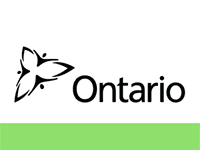An agreement has been reached between the Ontario Government and the Associations representing Catholic teachers and Catholic School Boards in the Province. Although the current shutdown of schools may not make this as immediately relevant to parents and students as it otherwise might, it is an important step in the sometimes bitter history of relations between teachers and the Ministry of Education.
The Ontario Catholic School Trustees’ Association [OCSTA] and Ontario English Catholic Teachers’ Association [OECTA] reached a tentative deal with the Ministry on March 12, but it was not until last week that OECTA and OCSTA ratified the arrangements reached in talks. OECTA represents 45,000 teachers in Ontario, at both elementary and secondary levels, and the effect of its increasing level of strike action had been causing real disruption in the school year before the March Break. The Associations were the first to reach an agreement with the Ministry after the long campaign by teachers and boards across the province.
The three-year collective agreements will be effective from September 1, 2019, through August 31, 2022. Under the agreement, OECTA teachers will receive a 1% wage increase per year, for three years. The government will fund $33.5 million in the 2020-2021 school year and $33.8 million in the 2021-2022 school year to create additional teacher positions to provide flexibility to address special education, mental health initiatives and STEM (science, technology, engineering and mathematics) programming.
For 65% of the vacancies, hiring will continue to be conducted based on seniority. The remaining 35% for permanent teaching positions will be in support of the school boards’ efforts to promote merit and diversity in hiring practices and provide opportunity for mobility of teachers between boards.
A Ministry statement noted that: “The government is committed to maintaining full-day kindergarten and retaining the existing staffing model. There are no changes to class size for Ontario’s youngest learners in Junior Kindergarten through Grade 3. Provincial funding, and legislated class size restrictions provide class sizes for grades 4-8 to reflect an average class size of 24.5, and a change for grades 9-12 to reflect an average class size of 23 which is effectively the same as 2019-2020 school year.”
Online Learning (E-Learning) was another issue causing disputes between the Associations and the Ministry. As part of the agreement, students entering Grade 9 in the 2020-2021 school year will be required to complete two mandatory on-line learning courses in order to graduate.
Exemptions to the requirement can be made for reasons such as to accommodate individual students with learning needs, students who have issues accessing technology and newcomers to Ontario who enter secondary school after Grade 9.
Minister of Education, Stephen Lecce, commented on the deal, noting that the government would “continue to advance efforts that improve and modernize Ontario’s education system and serve the needs of students and their families, while being fiscally responsible”, and that the government’s “primary objective was to provide predictability and certainty to parents, students and educators alike. The time is now for the outstanding deals – parents deserve predictability.”








